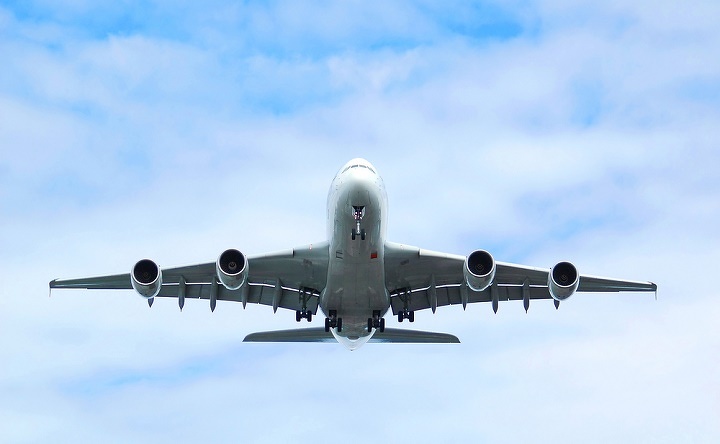Operating Costs Killing Jumbo Jets As Airlines Profit From Smaller Planes

But that may not be enough to ensure the survival of the superjumbo species, as millions of flyers, millennial and otherwise, have prioritized price over luxury. Meanwhile, even skeptics like Warren Buffett, who called the airlines a "deathtrap" for investors, are buying stock — as long as the carriers stick to their new-found fiscal responsibility.

Apple, Not Google Or Facebook, Will Define The Future Of Augmented Reality
At Apple's last annual developer conference in June, one new tool captured ... →
For years, it was thought millions of passengers would travel each year in giant “Queens of the Sky” capable of holding 500 passengers, like the 747 and later the Airbus A380.
With more than 1,500 built, the 747 had a great run, carrying a total of more than 3.5 billion passengers as of 2014. But today, only 489 747s are still in service, many in cargo configuration.
The current heavyweight champion is the A380, which boasts a maximum takeoff weight of 1.235 million pounds, versus the 747-8’s 987,000. The 747-8 can carry 467 passengers while the A380 holds 500 and can go up to 800 in some configurations. Even more impressive, the A380-800 has a design range of 8,500 nautical miles and currently serves the second- and third-longest non-stop scheduled flights in the world.
However, these may ultimately be meaningless distinctions, as the airlines have realized that bigger isn’t necessarily better. Since the A380's first flight in 2005, only 215 of the huge planes have been delivered, 97 of them to Emirates Airlines. The A380 has been repeatedly characterized as a money-loser for Airbus Industries.

10 Breakthrough New-Car Features Coming For 2018
If you’ve finally decided to trade in your current ride after five or more ... →
What is KO’ing the current kings of the sky isn’t mechanical issues or shifting passenger preferences (who wouldn’t prefer a giant comfy plane with a bar?) but that age-old culprit, the dismal science of economics.
The A380 burns a lot of fuel considering its weight and four-engine configuration, but airlines are dropping the giant plane even in a time of low-fuel costs. In 2017, Singapore Airlines retired several of the craft. In 2016, Qantas canceled an order for eight, and even home team Air France dropped two planes from an order of 12. The A380 is essentially on deathwatch, with production set to drop to below one per month if new orders don’t arrive. Even the plane’s signature sweeping staircase may face the budget-cutters’ ax.
Why are airlines dropping the A380 even when fuel is cheap? Operating costs. Estimates are that operating A380s costs between $26,000 and $29,000 per hour. By contrast, an average flight on an American Airlines 737-800, which can hold 160-175 passengers and has a range of about 2,900 miles, costs $2,180 per hour.

The Political Benefits Of Big Science
Whenever I give a presentation to the general public, there's one type of q... →
Some may say this is comparing apples and oranges. The A380 is designed for very-long-haul routes and the 737 and Airbus A320 families are short-haul planes.
While this is true, how many of us have a need or desire to fly the longest A380-800 route in the world, from Dubai, United Arab Emirates, to Auckland, New Zealand, on Emirates? The 8,824-mile journey takes 17 hours 15 minutes each way. I found an economy seat on Orbitz, for Jan. 10-Jan. 18, 2018, for $1,922. (For mileage nuts and masochists, here’s a list of the world’s longest flights.)
The A380 is clearly becoming a niche aircraft. Many airports can’t handle it or its two exit gateways, and those that can experience flash mobs at boarding and customs. And when an Air France A380 had an engine explosion and made an emergency landing in Labrador, Air France had to send two planes to pick up the 497 passengers. One of the flights went straight to Los Angeles while the second flew to Atlanta, which necessitated putting the LA-bound passengers on additional aircraft.

For Disney And Facebook, New Streaming Video Forays Are About The Data
There were two big stories in the TV industry last week and they both revol... →
Smaller planes have smaller headaches; if an Airbus 319 (which has a range of 3,700 miles) were taken out of service, only about 160 passengers would have to be accommodated.
The business case for the jumbo jets has been shattered, with them replaced by smaller, more efficient and easier to fill twin-jet aircraft like the Airbus A320 family and the Boeing 737. The latest iteration, the 737 Max 7, can carry172 passengers 3,800 miles, with fuel-efficient winglets. It’s no wonder that these efficient planes are the workhorses of the low-fare (like Southwest, which flies only 737s) and ultra-low-cost carriers (like Spirit and WOW), which have been packing in passengers across the U.S. and Europe.
Crammed single-aisle jets lack the panache of piano bars and sweeping staircases. But to airline investors, they look beautiful.
Michael Goldstein, Contributor

